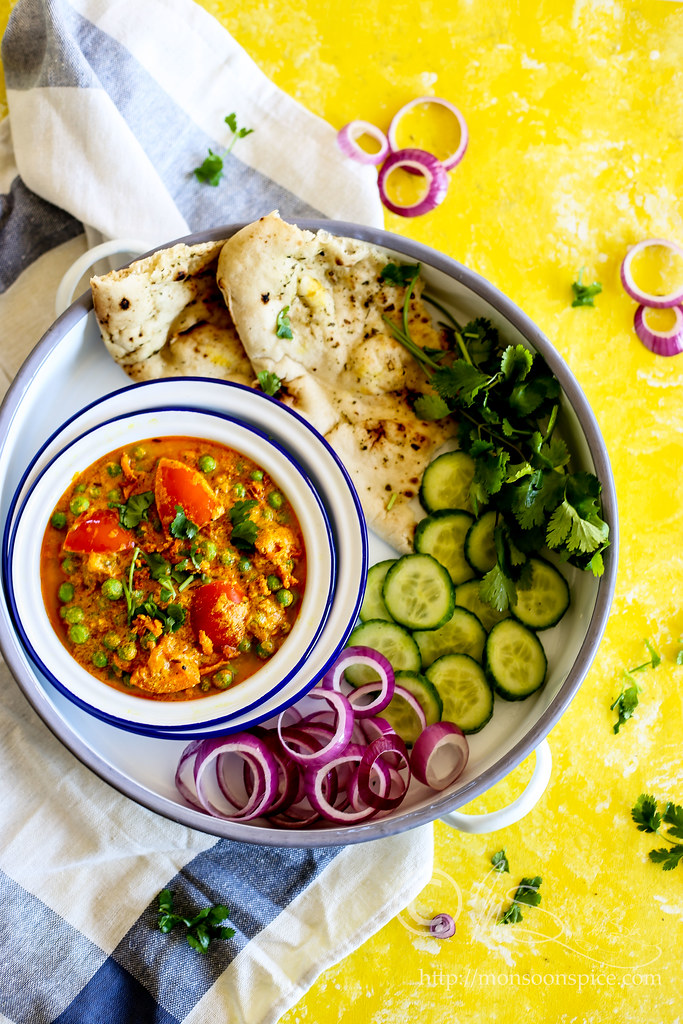
Learn how to make Rajasthani Haldi Ki Subji or Fresh Turmeric Curry ~ Fresh turmeric and green peas cooked in a spicy, creamy tomato and yogurt curry
Curry lovers all over the world are familiar with one ingredient without which you can’t imagine cooking curry! I am talking about one of the most popular spice turmeric which leaves yellow stains on everything which it comes in contact with. It’s one spice that’s been traditionally used as a spice in Indian, Asian and African cuisines for more than 4,500 years! So what made this quintessential ingredient for curries and stews to migrate to fancy (not) things like Turmeric Lattes, cold pressed juices, smoothie bowls etc? What is it about this stone age staple that suddenly graduated into some kind of super food in the last couple of years?
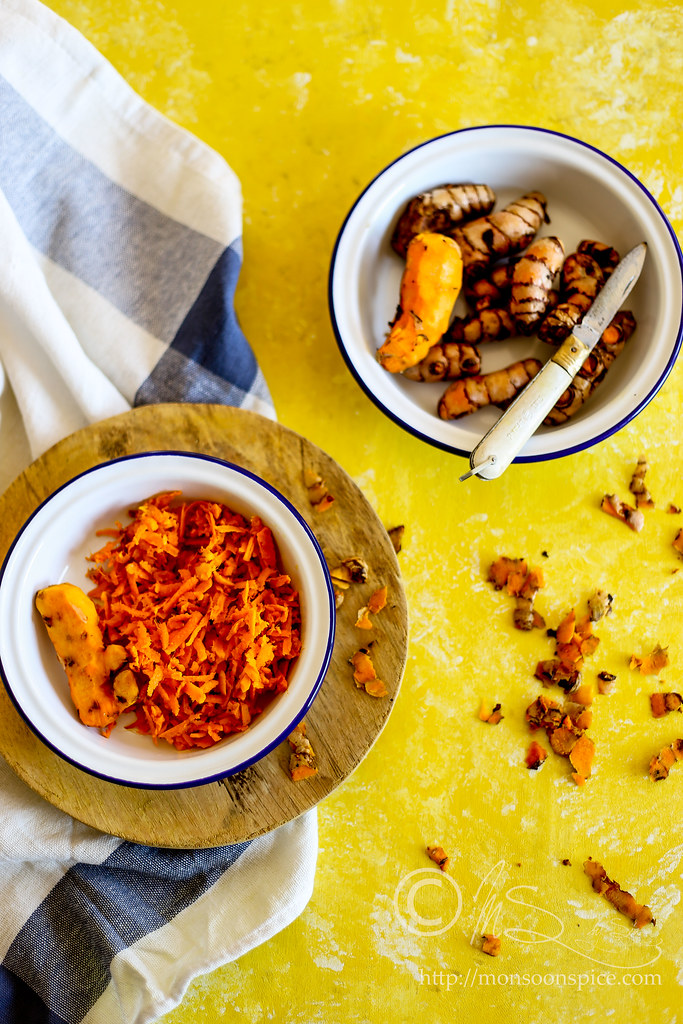
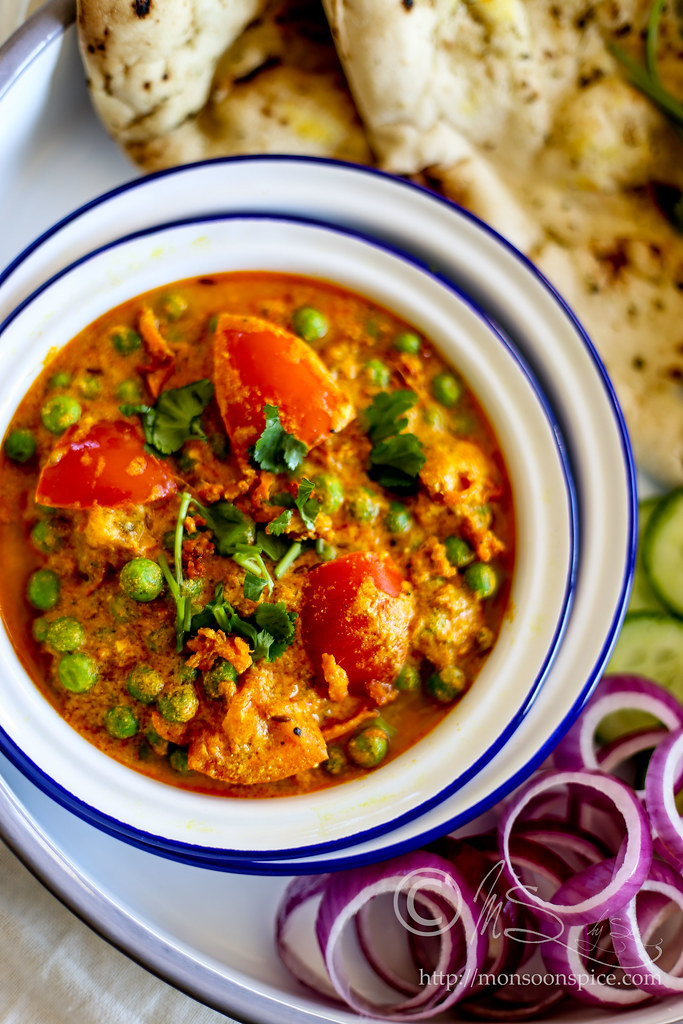
Turmeric has always found its way into our dinner plates every single day. There isn’t a savoury dish in our home that goes untouched without a sprinkle of this gold dust. I grew up hearing about the healing properties of turmeric since I was a toddler. One sneeze and my grandma would run to her kitchen to make me a cup of Turmeric Milk or Kashaya with a generous pinch of turmeric. According to her there isn’t a cold or sore throat can’t be healed with a warm cup of turmeric milk. A scratch, a cut or deep wound was healed with a coat of turmeric paste either prepared by grinding the fresh turmeric root or by mixing ground turmeric with water. Pimples, skin problems? No problem. Ground turmeric from fresh roots or powdered form mixed with sandal wood paste or gram flour or milk or fresh cream had always been our choice of face mask for any beauty treatments. The trust we have on this golden hued spice was not born a year or couple of years ago, but since over 4,500 years ago which is now backed with scientific researches making turmeric one of the most admired super foods of the century.
As most super foods, turmeric has an extensive, exhaustive and impressive list of health benefits making it the current king of the super foods. With its phytochemical profile which is thought to be as, if not more, effective than pharmaceutical drugs. The scientific discovery in the recent years has proven how powerful its active compounds curcuminoid is, the most important of which is curcumin with its powerful anti-inflammatory effects and very strong antioxidants, whilst also being a fantastic spice to support the liver and detoxification pathways. In addition, the recent studies also show that turmeric may have cancer preventative actions, making it a serious super food not to be overlooked.
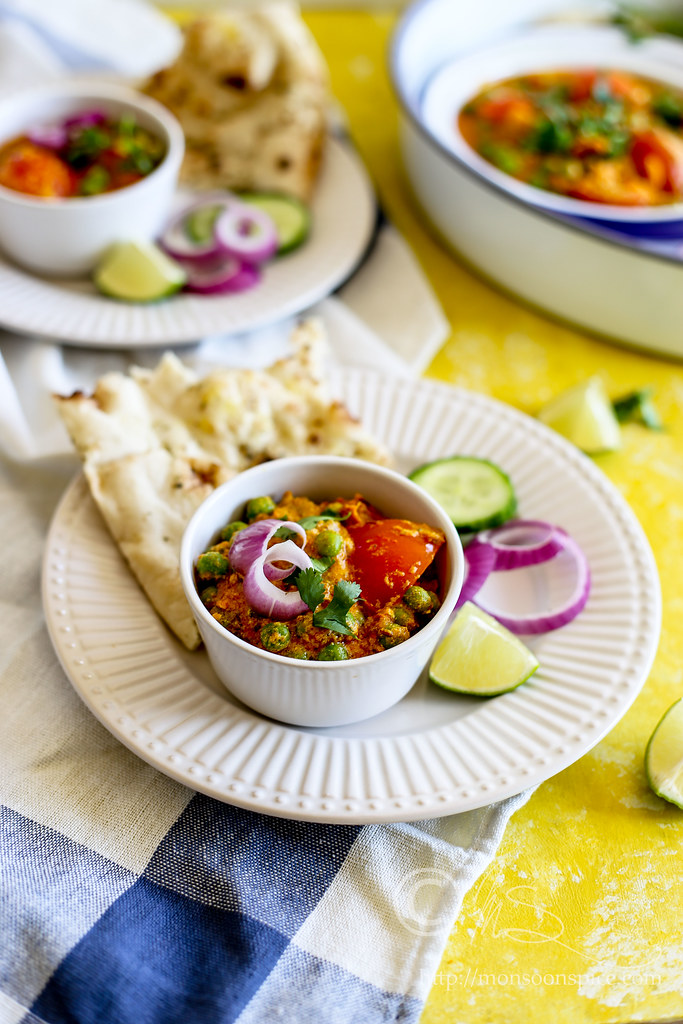
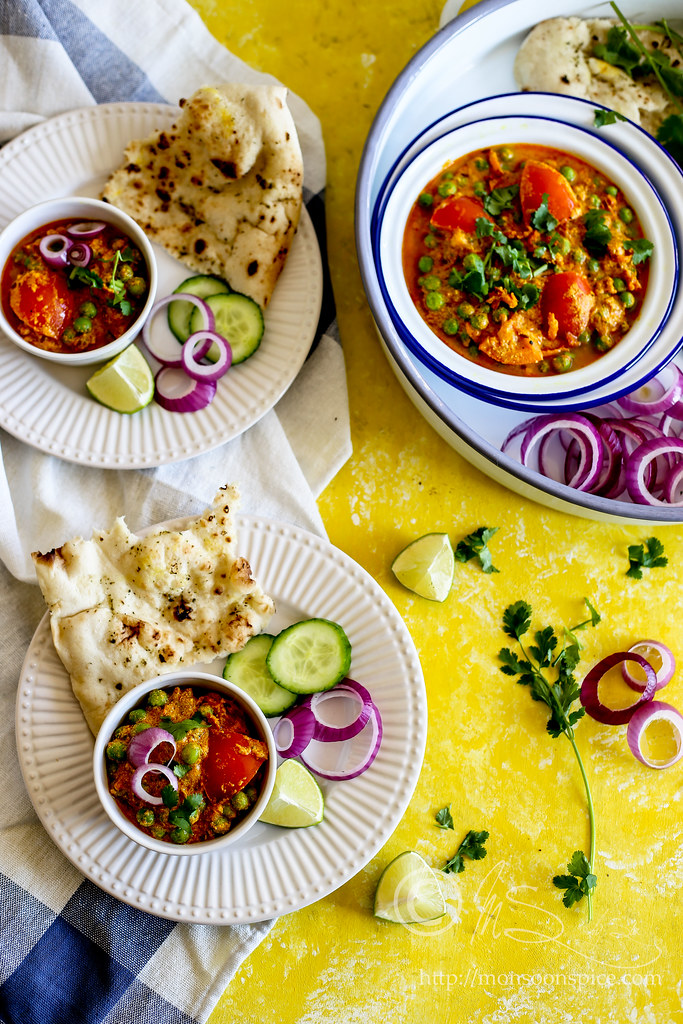
Super food or not, turmeric is one irreplaceable ingredient in my pantry that’s used in cooking as a spice for brilliant colour and of course for its medicinal properties. You can buy turmeric as a packaged ground spice from dried turmeric roots or as a fresh turmeric roots which floods the market during winter. It’s not difficult to grow turmeric as all you need to do is bury couple of turmeric roots in a compost to get regular supply of fresh turmeric roots year long. Every year whenever I visit home in India, my MIL and mother pack me freshly ground home grown turmeric. The aroma, flavour and the vibrant colour of home-made turmeric powder is unparallel to that of store bought.
Although the nutritional differences of turmeric powder and fresh roots are negligible, the fresh ones are more potent in terms of flavour. Amma makes an excellent
Tambli, a Mangaloren yogurt and coconut based curry, using fresh turmeric roots and the fresh turmeric pickle (recipe to follow soon) is my all-time favourite pickle. When I got a bag of fresh turmeric roots few weeks ago, I made a batch of pickle and
tambli and still left with good amount of turmeric roots. While looking for some new recipe to try, I came across
this recipe of
Rajasthani Haldi Ki Subji or
Fresh Turmeric Curry. The fresh turmeric roots are peeled and then grated before frying them in ghee until they turned brown and crisp. This fried turmeric roots along with green peas are then simmered in a spicy gravy of tomatoes and yogurt. The recipe intrigued me and got my complete attention with its ingredient lists. Being a firm believer of Ayurvedic principle in cooking, the use of ghee, yogurt and black peppercorns in the recipe to enhance the health benefits of turmeric roots. According to Ayurvedic principle, ghee has cooling properties. So make sure you don’t skimp on the ghee as turmeric by nature is hot and it ups the body heat. The ghee helps to balance that and hence the use of ghee in this recipe. You can substitute the ghee with any cooking oil, but the flavour will be much different and not quite flavourful. Also it is important to note that the active ingredient curcumin in turmeric is poorly absorbed into the blood stream. The black peppercorns contain piperine which is a natural substance that enhances the absorption of curcumin by 2000%. So try not to skip black peppercorns in this recipe to make the most of that amazing anti-inflammatory and antioxidant present in the turmeric.
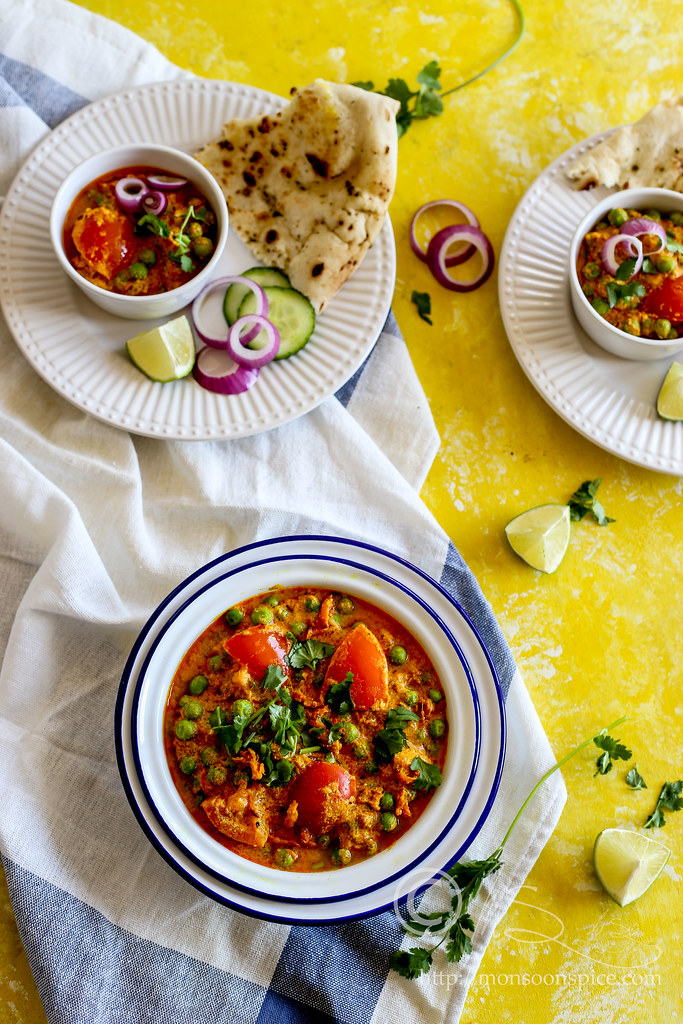
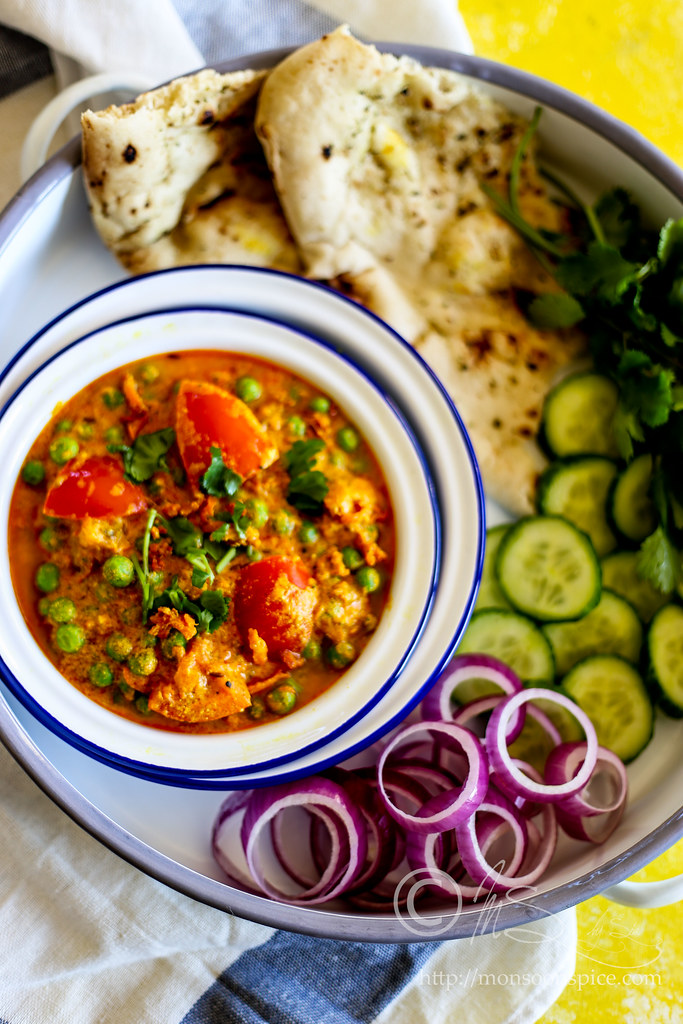
This Rajashtani Haldi Ki Subji or Fresh Turmeric Curry is quite flavourful and goes well with any Indian flat breads or with rice. The sharp flavour of fresh turmeric roots really comes through in this creamy yogurt based curry. There are couple more things to keep in mind when making this Rajashtani Haldi Ki Subji or Fresh Turmeric Curry. Since raw turmeric can leave stains on hands for many days, you can wear a gloves to avoid it. You can also grease your hands with oil as well, although it will not completely avoid from leaving yellow stains. You can also use cauliflower in this recipe. Cut them into small florets, about 2 cups, and stir fry them in a ghee for 4-5 mins until they turn light brown. Add them along with fried turmeric and green peas to the gravy following the recipe instruction above. Once you add the yogurt, it is important that you stir the gravy continuously to make sure that the yogurt doesn’t curdle the gravy and forms lumps. Stirring continuously makes sure that the gravy becomes creamy and smooth. And finally, you can substitute the freshly ground spice powder with store bought garam masala. So shall we get cooking? :)
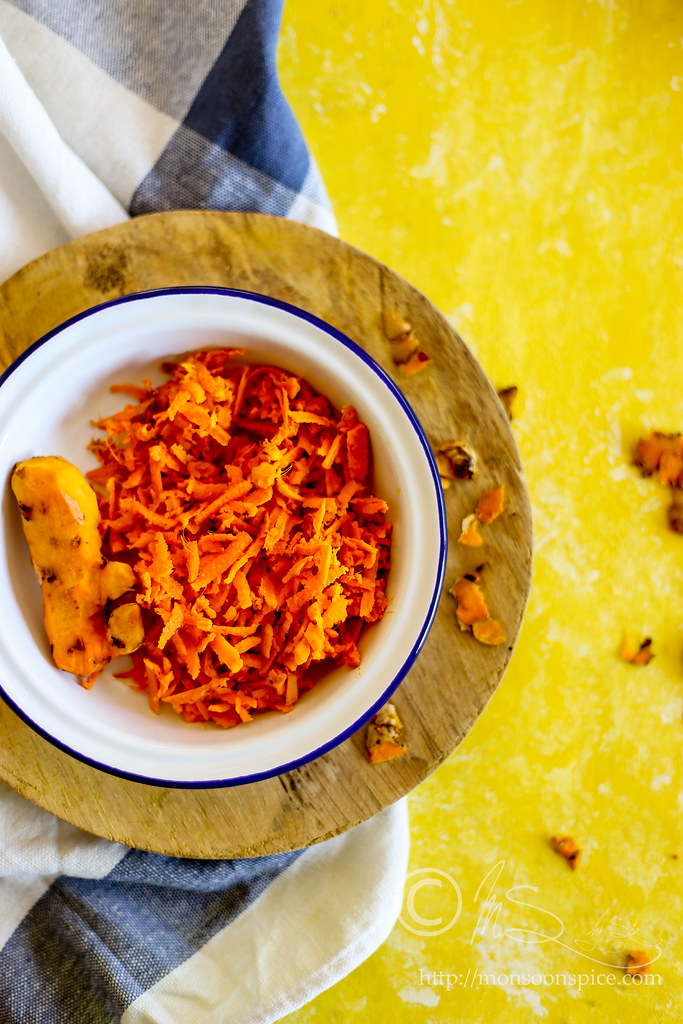
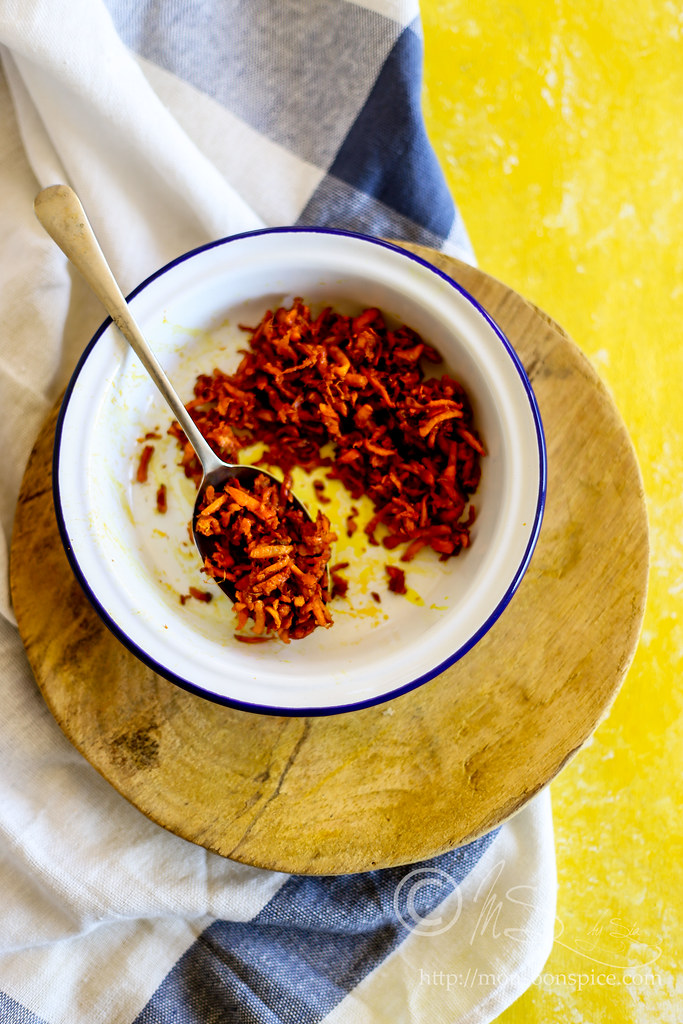
Rajasthani Haldi Ki Subji or Fresh Turmeric Curry (Fresh turmeric and green peas cooked in a spicy, creamy tomato and yogurt curry)
Prep Time: 10-15 mins
Cooking Time: 20-25 mins
Recipe Level: Easy/Beginner
Spice Level: Medium
Serves: 4-6 People
Recipe Source: Nisha Madhulika
Shelf Life: Best served fresh but can be refrigerated for 2-3 days
Serving Suggestion: With any
Indian flat breads (
Whole Wheat Naan or
Butter Naan or with any
stuffed parathas) or plain/flavoured
Basmati rice
Ingredients:
¾ cup Raw/Fresh Turmeric Roots, peeled and grated
1 cup Green Peas, fresh or frozen
1 cup Yogurt, whisked
½ inch Ginger, peeled and roughly chopped
1-2 Green Chillies, cut into 1 cm pieces (Optional, adjust as per taste)
5 medium Tomatoes
1-1½ tsp Sugar (Optional)
3-4 tbsp Ghee
Salt to taste
2-3 tbsp Fresh Coriander Leaves, finely chopped
Spices Used:
1 tsp Saunf/Fennel Seeds
1 Black Cardamom
1-inch Cinnamon
8-10 Black Peppercorns (adjust as per taste)
3-4 Cloves
1½ tsp Dhania/Coriander Powder
For Tadka/Tempering:
1 tsp Jeera/Cumin Seeds
¼ tsp Hing/Asafoetida
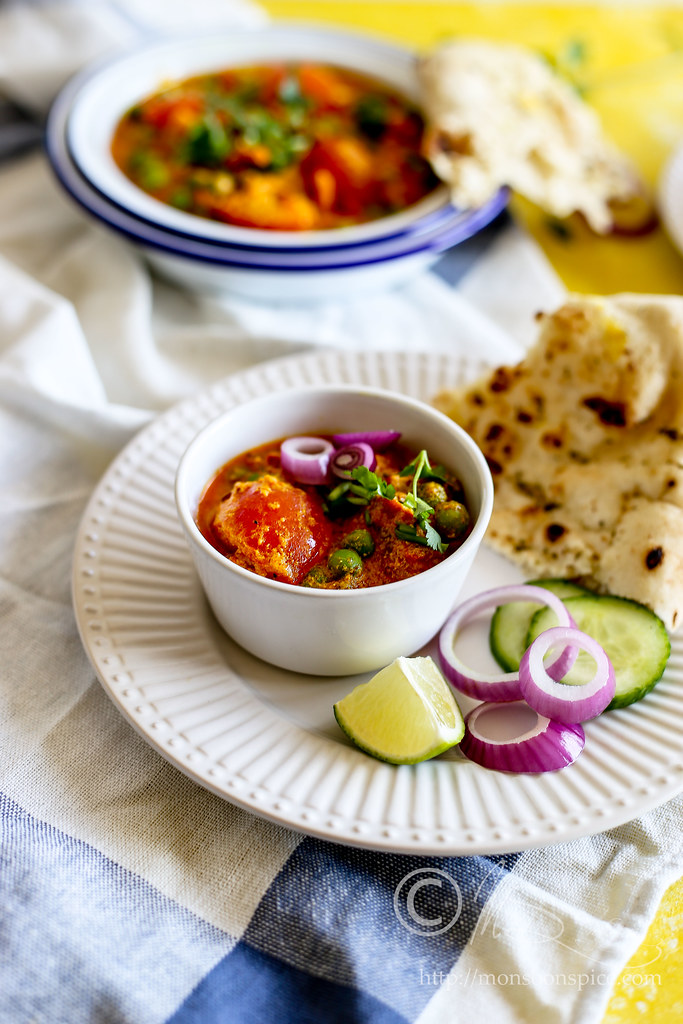
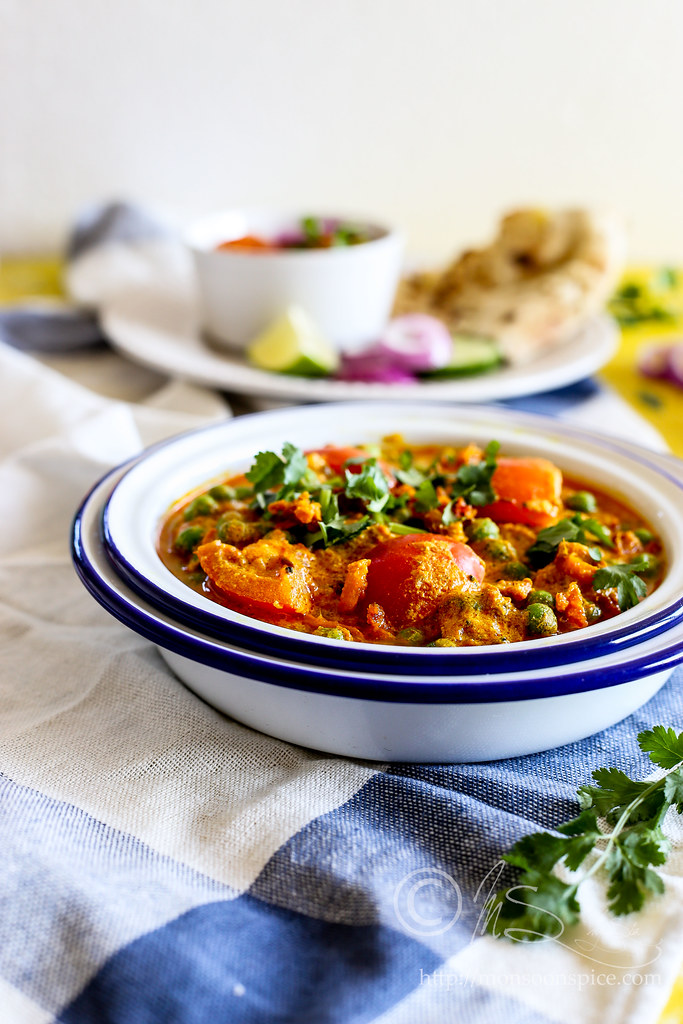 Method:
Preparation:
Method:
Preparation:
- Wash the raw/fresh turmeric roots thoroughly to remove any soil or dirt and pat it dry with a kitchen towel. Since raw turmeric can leave stains on hands for many days, you can wear a gloves to avoid it. You can also grease your hands with oil as well, although it will not completely avoid from leaving yellow stains. Peel them by scrapping the skin with knife or using a peeler. Once peeled, grate the turmeric roots and keep it aside. You need around ¾ cups of grated raw turmeric.
- Grind 3 tomatoes, green chillies and ginger to smooth paste without adding any water and keep it aside.
- Cut the remaining tomatoes into halves and cut each halves into quarters.
- Crush the black cardamom to break it open and collect the seeds. Crush these black cardamom seeds with fennel seeds, cinnamon, black peppercorns and cloves to powder in a pestle and mortar or in a spice grinder. Keep it aside until needed.
Proceed to Cook:
- Melt 3-4 tbsp ghee in a pan and add grated fresh turmeric. Fry it on medium flame continuously until it turns light golden and crisp and leaves oil, about 8-10 mins. Drain as much ghee as possible and transfer the fried turmeric into a clean plate until needed.
- Add fresh or frozen peas to the same pan and sauté the peas for 2-3 minutes in ghee on a medium flame. Transfer the peas to a plate and keep it aside.
- Add cumin seeds and hing to the pan and fry them on medium flame until the cumin seeds sizzle and add the ground masala powder and coriander powder and fry them for about 30 seconds.
- Add the pureed tomato paste and sugar and keep stirring them for about 4 minutes on medium flame until the ghee separates from the gravy. The sugar is an optional ingredient, but I prefer to use it as it helps to cut the sharpness of tomatoes.
- Next add whisked yogurt and give it a good mix. It is important to stir the gravy continuously to make sure that the yogurt doesn’t curdle the gravy and forms lumps. Stirring continuously makes sure that the gravy becomes creamy and smooth.
- Bring the gravy to gentle boil, about 3-4 minutes before reducing the heat to low. Add fried turmeric, green peas, cubed tomatoes and salt to taste and mix them well. Cover the pan with lid and let it simmer for 6-7 minutes.
- Add chopped coriander leaves and mix them well before turning off the flame. Leave the curry to rest covered for at least 15 minutes before serving.
- Serve this delicious Rajasthani Kacchi Haldi Ki Subji or Raw Turmeric Curry With any Indian flat breads (Whole Wheat Naan or Butter Naan or with any stuffed parathas). This curry goes well with a plain or flavoured Basmati rice like jeera rice or pulao. You can also use this curry as a filling for wraps. Enjoy!
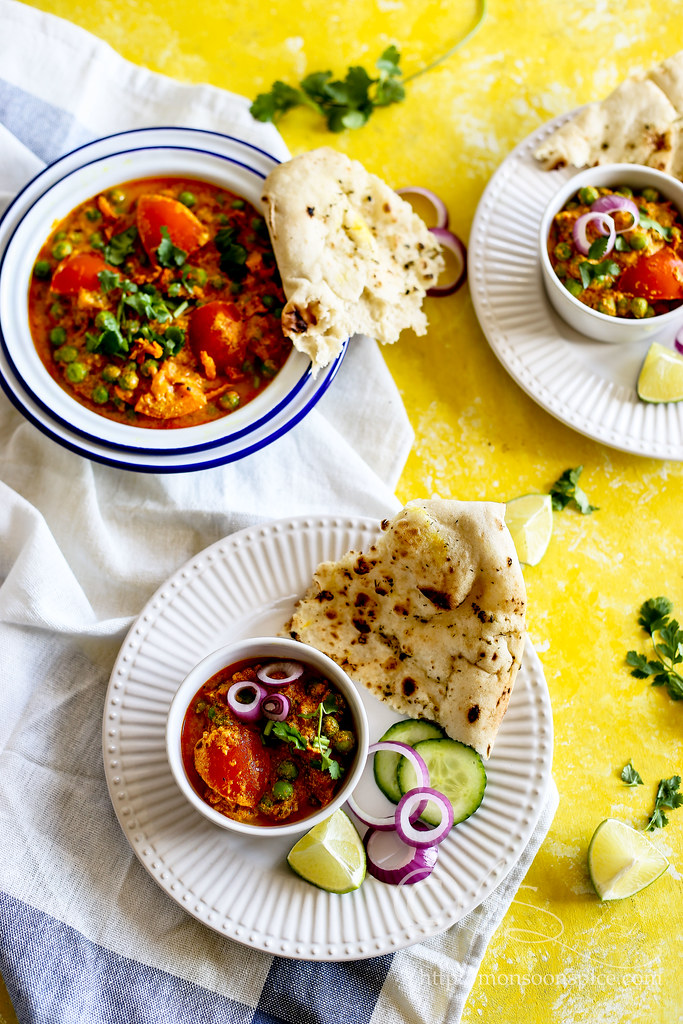
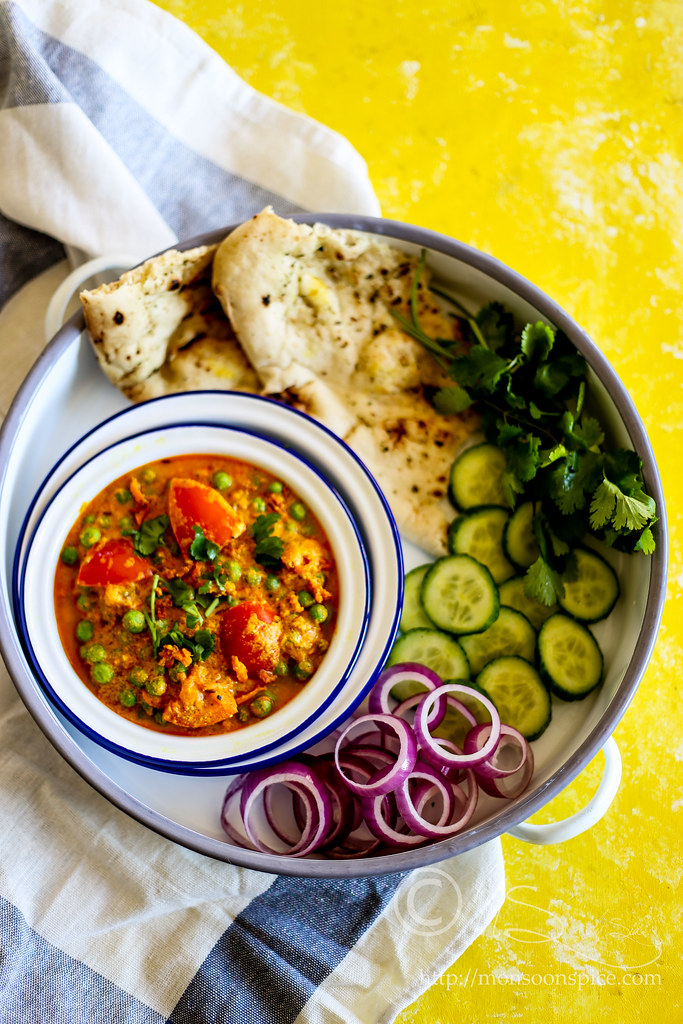
Sia’s Notes:
- Since raw turmeric can leave stains on hands for many days, you can wear a gloves to avoid it. You can also grease your hands with oil as well, although it will not completely avoid from leaving yellow stains.
- Make sure you don’t skimp on the ghee as turmeric by nature is hot and it ups the body heat. The ghee helps to balance that and hence the use of ghee in this recipe. You can substitute the ghee with any cooking oil, but the flavour will be much different and not quite flavourful.
- The active ingredient curcumin in turmeric is poorly absorbed into the blood stream. The black peppercorns contain piperine which is a natural substance that enhances the absorption of curcumin by 2000%. So try not to skip black peppercorns in this recipe to make the most of that amazing anti-inflammatory and antioxidant present in the turmeric.
- You can also use cauliflower in this recipe. Cut them into small florets, about 2 cups, and stir fry them in a ghee for 4-5 mins until they turn light brown. Add them along with fried turmeric and green peas to the gravy following the recipe instruction above.
- Once you add the yogurt, it is important that you stir the gravy continuously to make sure that the yogurt doesn’t curdle the gravy and forms lumps. Stirring continuously makes sure that the gravy becomes creamy and smooth.
- You can substitute the freshly ground spice powder with store bought garam masala.














I love any and all curry recipes! This one looks exceptionally delicious!
ReplyDeleteThanks, Sarah!
DeleteAbsolutely delightful and colourful, thanks Sia for the recipe. Will try it out soon, can't wait.
ReplyDeleteThank you, Meera! I am told that it's a special curry for winter as the turmeric's medicinal properties keep our body warm during the winters. :) Would love to hear your feedback whenever you give it a try.
DeleteI love turmeric! Now if only someone could figure out a way to keep it from staining EVERYTHING lol
ReplyDeleteLOL... There is no escape from that but using a gloves or greasing the work surface/hands does helps to some extent when using fresh turmeric roots.
DeleteA wonderful tasty curry dish, beautifully presented. Turmermic does seem to be so popular at the moment, and can be a very difficult spice to use. Too much is bitter, but used correctly, it is a wonderful addition and certainly makes a curry delicious. (comment for Helen @ fussfreeflavours.com)
ReplyDeleteThank you, Jen! You are absolutely right about balancing the spices. Half to tsp of turmeric powder is more than enough to enhance the flavour of curries. This curry has quite a lot of freshly grated turmeric and thus frying it in ghee helps to balance the sharp, almost bitter, flavour.
DeleteI can almost smell the ingredients in this dish, simmering on my stove now! Looking forward to making this.
ReplyDeleteThanks, Kathy :) I hope you like it. And please do leave a feedback when you try it.
DeleteI love delicious curries and I so miss Thalis. This looks so delectable. I love the colors on this palette.
ReplyDeleteThanks, Veena! Even I miss the thalis of India and the only way out for me is to cook them myself :)
DeleteThis Rajasthani curry looks so tempting Sia.We do a sweet dish which is steamed in turmeric leaves but never tasted fresh turmeric, have to try it. You always inspire me Sia,thanks for that :)
ReplyDeleteThank you, Shilpa! We too make a coconut cakes stuffed with sweet coconut mix wrapped in turmeric leaves called kadubu or genasale but never knew we could make a curry using the roots. The regional cuisines of India is so vast and varied and I love to explore and learn new recipes using ingredients like turmeric roots. Do give this recipe a try as this is a really great way to use the fresh turmeric roots, especially it being winter :)
DeleteSuperb Sia! I can't wait to try this recipe.
ReplyDeleteThanks, Madhu! Would love to get a feedback whenever you try it.
DeleteGrowing up, I ate a lot of kacha haldi. These kacha haldi with gur was something we had to eat first thing in the morning. Never tried any curry with that though. Will surely try.
ReplyDeleteWow! Didn't knew that you can eat it with gud. I learnt something new today :)
DeleteHey Sia.. Its a totally new recipe to me.. Have never used fresh turmeric roots except for growing the fragrant leaves in which we make steamed kadubu or use it in other sweet dishes. Your pics are as always a treat to eyes! Wonderful meal
ReplyDeleteThank you, Uj! It's a new recipe for me as well, but it has become a favourite already. You got to try it at least once if you haven't already as the flavours are just mind boggling! :)
Delete